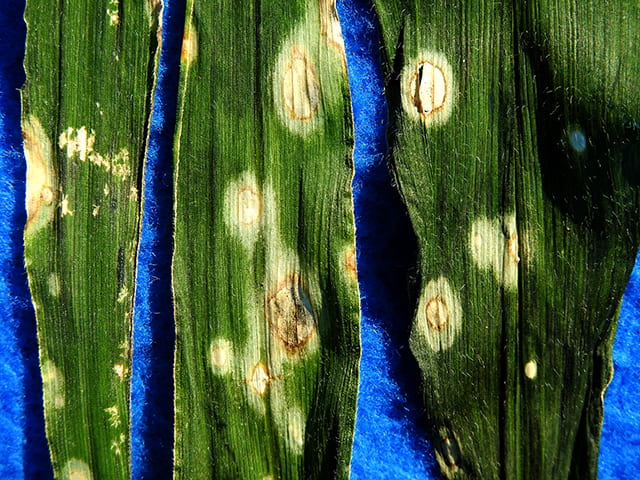The bacterium Pseudomonas syringae causes round, white to light tan spots on leaves. Spots typically have a brown border. This disease often appears after a rain storm when warm (75-85°F is favorable). During storms, splashing water disperses the pathogen and wounds that occur (such as by blowing soil) enable the pathogen to enter the leaf. Fortunately this disease is not known to result in yield loss, thus control practices are not recommended. However, accurate diagnosis is important as there are other leaf spot diseases that have a greater impact.
Saprophytic fungi can grow on the dead tissue in leaf spots giving them a fuzzy appearance (below).





